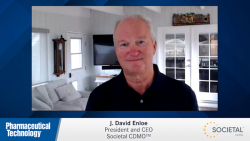
OR WAIT null SECS
- About Us
- Advertise
- Contact Us
- Editorial Info
- Editorial Advisory Board
- Do Not Sell My Personal Information
- Privacy Policy
- Terms and Conditions
© 2025 MJH Life Sciences™ , Pharmaceutical Technology - Pharma News and Development Insights. All rights reserved.
Biosimilars—It’s the Differences That Really Matter
This week, the Drug, Chemicals, and Associated Technologies Association (DCAT) is holding its annual week-long meeting in New York City.
This week, the Drug, Chemicals, and Associated Technologies Association (DCAT) is holding its annual week-long meeting in New York City. The meeting covers topics including the business and regulatory environment, manufacturing practices, and supply chain logistics of the pharmaceutical industry. Wednesday Mar. 14, 2012 featured a session devoted to biologics, in which the first two speakers spoke at length on the topic of biosimilars, and highlighted important differences between follow-on biologics and generic small molecules.
The first speaker, Neil Mahoney, President & CEO of Global Pharma Alliance examined the business environment for the development of biosimilars. His talk was a cautionary one for those looking to enter this arena. Several factors make it more difficult to turn a profit making biological follow-ons than it has been for generic small molecules. The first challenge is the very high cost of development compared with a generic: According to data presented by Mahoney, the average biologic follow-on will take $100-$200 million to develop, compared with $2-3 million for a small molecule generic. The second challenge is market share. While we’re all aware of the phenomenon of the patent cliff for small molecules, where generics can capture most of the market share within a few months of being introduced, the market penetration of biosimilars in Europe has not been nearly as profound, with some products capturing only a few percent of the intended market. Tiny market share combined with large start-up costs can result in no profitability for the developer.
The second speaker, Steven Kozlowski, MD, Director, Office of Biotechnology Products at the Center for Drug Evaluation and Research at FDA spoke at length on the new biosimilar draft guidance. The biggest focus of his talk was the importance of a thorough and detailed characterization of a candidate biosimilar to assure FDA that the biologic product is similar enough to the originator biologic to be called biosimilar. It’s almost a given that two different production systems, starting with the same construct, will produce slightly different proteins. The key for a biosimilar approval will not be just to demonstrate similarity: it will be to exhaustively identify any differences between the follow-on molecule and the originator, and demonstrate to FDA that these small differences are unlikely to affect the products efficacy or safety.
From these two talks, one begins to get a sense of how similar a biosimilar is to a generic. Clearly, quite different.


